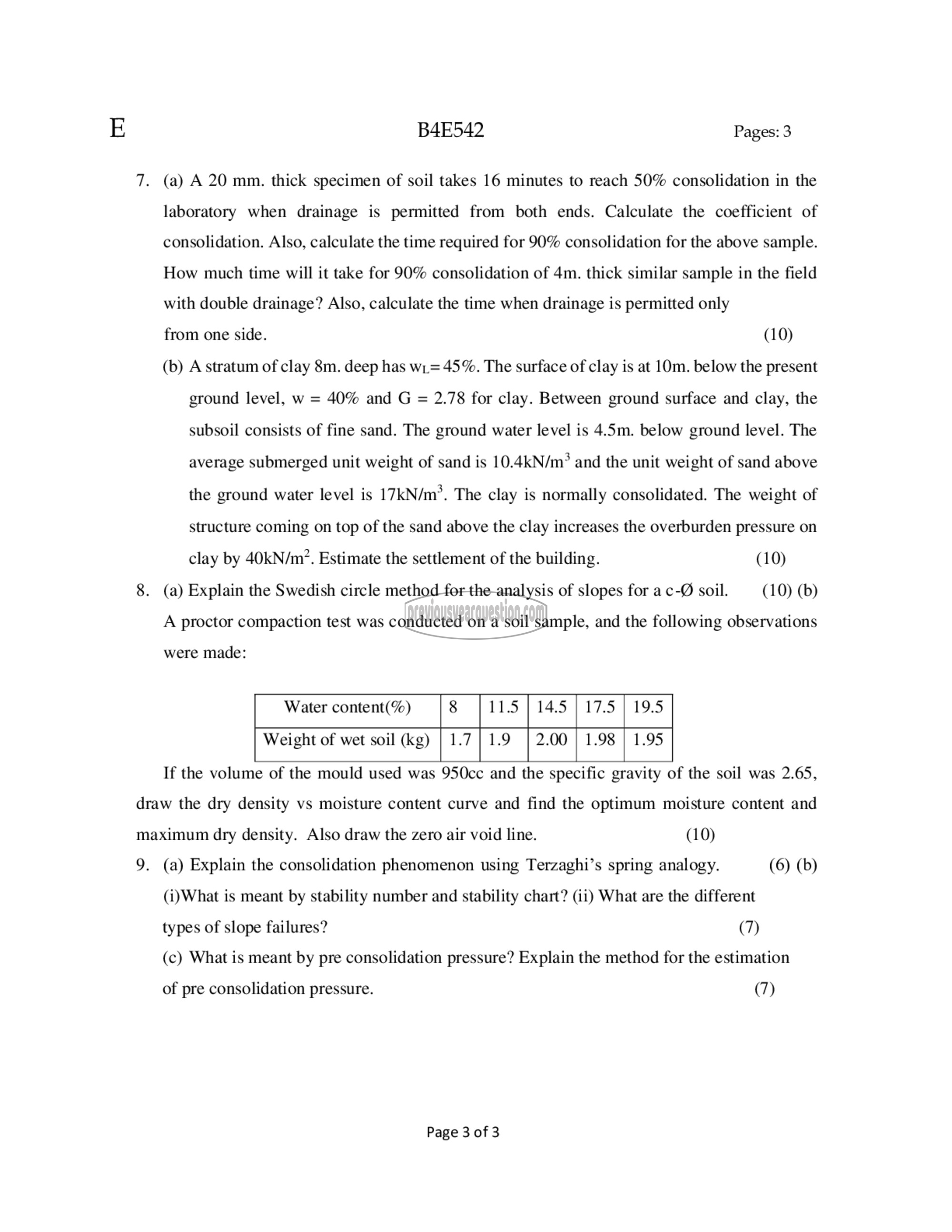APJ ABDUL KALAM TECHNOLOGICAL UNIVERSITY Previous Years Question Paper & Answer
Semester : SEMESTER 4
Subject : Geotechnical Engineering- I
Year : 2017
Term : JUNE
Branch : CIVIL ENGINEERING
Scheme : 2015 Full Time
Course Code : CE 208
Page:3
E B4E542 Pages: 3
7. (a) A 20 mm. thick specimen of soil takes 16 minutes to reach 50% consolidation in the
laboratory when drainage is permitted from both ends. Calculate the coefficient of
consolidation. Also, calculate the time required for 90% consolidation for the above sample.
How much time will it take for 90% consolidation of 4m. thick similar sample in the field
with double drainage? Also, calculate the time when drainage is permitted only
from one side. (10)
(b) A stratum of clay 8m. deep has wL= 45%. The surface of clay is at 10m. below the present
ground level, w = 40% and G = 2.78 for clay. Between ground surface and clay, the
subsoil consists of fine sand. The ground water level is 4.5m. below ground level. The
average submerged unit weight of sand is 10.4KN/m? and the unit weight of sand above
the ground water level is 17kN/m*. The clay is normally consolidated. The weight of
structure coming on top of the sand above the clay increases the overburden pressure on
clay by 4010/22. Estimate the settlement of the building. (10)
8. (a) Explain the Swedish circle method for the analysis of slopes for a c-@ soil. (10) (b)
A proctor compaction test was conducted on a soil sample, and the following observations
were made:
Water content(%)
Weight of wet soil (kg) | 1.7 1.9 | 2.00 | 198 | 1.95
If the volume of the mould used was 95000 and the specific gravity of the soil was 2.65,
draw the dry density vs moisture content curve and find the optimum moisture content and
maximum dry density. Also draw the zero air void line. (10)
9. (a) Explain the consolidation phenomenon using Terzaghi’s spring analogy. (6) (b)
(i)What is meant by stability number and stability chart? (ii) What are the different
types of slope failures? (7)
(c) What is meant by pre consolidation pressure? Explain the method for the estimation
of pre consolidation pressure. (7)
Page 3 of 3
